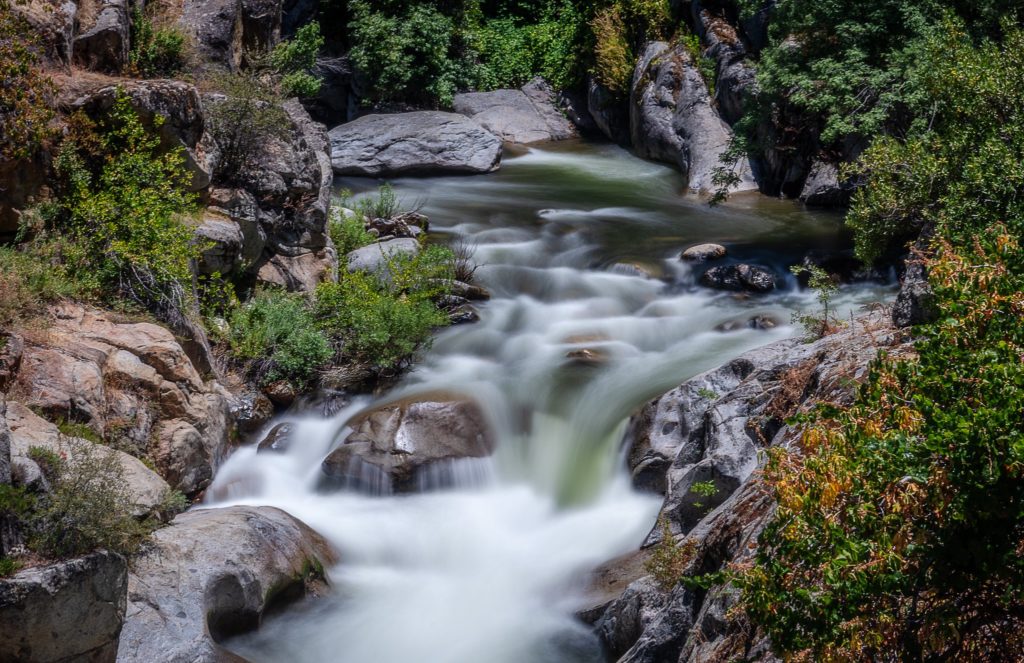Shooting landscapes is obviously all about the location, however another major factor that plays into the overall photo is the light, time of day and what you choose to do with the available light.
To complicate matters, many landscape scenes can be hard to shoot because of the stark contrast between the sky and ground (or ocean) below. One is direct light, the other is reflected light, and usually they require separate metering.
Of all the tools available to photographers today, including HDR, it seems that yesterdays technology is often skipped over in favor of fixing it in post-production later. There is a lot that can be done in post, however you'll get better results by starting with great images. One way to do this is utilizing filters. Here are three filters every landscape photographer should always carry with them. For other equipment, see our post on landscape photography gear.
Circular Polarizer
A circular polarizer will do a few things for you. Most noticeably it will help bring rich, deep colors to the sky and make foreground colors snap and become more vibrant. In this great comparison photo done by Gustaffo89, you can see the circular polarizer rotated to the most effective position on the left and how the clouds really pop and the roof color is more intense. In the least effective position, on the right, you can see the blue haze that is so common in the sky, and how it is eliminated on the right. One filter, rotated in different ways, provides different effects. This is one of the most effective and versatile filters to have in your bag. It also will help cut the reflection on glass and water. To learn how a circular polarizer actually works, read the technical specs on it here.
Neutral Density Filter

Neutral Density filters help to reduce the amount of light that passes through the lens into the camera. Why would you want to reduce light? In order to achieve the beautiful photo taken by Salim Photography, a long exposure was needed. By reducing the amount of light, an aperture capable of allowing the desired shutter speed, around 30 seconds, is feasible. It should be noted that Neutral Density filters, called ND for short, do not affect color in any way, their primary function is restriction of light. ND filters come in varying degrees of light transparencies, commonly noted at ND+1, ND+2 and so on and can be stacked to further decrease light transmission. A complete, technical explanation of how they work can be found here.
Graduated Filters
Graduated filters are those which contain a 50/50 mix of one type of filter with another. Essentially, it's like leaving about half of the filter clear while treating the other half, and a smooth transition between the two. Graduated filters come in near endless combination for many different effects and are perfect for difficult lighting situations. The above photo by Chris Gin didn't need to be a long exposure shot for any particular reason, but he wanted to give the sky a more rich, almost vignette look to it, as if it were burned a little bit. By utilizing a Graduated ND filter he prevented light from entering the top half of the frame while the bottom was left perfectly exposed. Sure, you can kind of replicate this in Photoshop, but doing it right will almost always end with better results.

This great photo shows a more creative use of graduated filters, a tobacco colored filter was used to give the sky a nice reddish-brown color. It gives a warming tone to an otherwise cold and ominous landscape. Because the application and combination of these graduated filters is near endless, keeping them in your bag is a great way to change, alter or correct a landscape photo.
Filters are not a thing of the past, regardless how far advancements have come in post-production. Keep these three types of filters in your bag when you head out for your next landscape shoot and reap the benefits.








8 Comments
Yes, I think especially it’s worth pointing out that the effects of polarising filter cannot be replicated in Photoshop no matter how much you try.
One filter you forgot to mention is the UV filter. It doesn’t do much for the image, just cutting out a little bit of haze, more importantly though, it is cheap and if you drop your camera or hit it accidentally against a rock while tackling a challenging landscape it protects the valuable lens from damage.
I’ve noticed that my B&W ND10 creates a colour cast despite being “neutral”. Would be interested to know if anyone has experience with another make of an ND10 filter and whether they have the same problem.
Thank you
The articles will be worth a lot more when photo`s are not removed. It is important that articles without all the example photo`s either be updated or deleted.
In camera filtering requires pre – visualization .. a art that is sorely missing in modern day digital photo.
I always walk with my Cr and ND (0-10) when out in thecountry/lake district.My Nike D3s does the rest of the work
Worth mentioning that you can stack a graduated ND filter onto other ND filters; say you wanted to really bring the sky down and also wanted to use an ND on the ground you can use an ND2 with an ND grad. quite easily.
Obviously if you have the ND grad on the outer edge you can easily adjust it, and don’t have to look a complete idiot swapping them over like I did once….!
Hi, I wanto to know,what is better to do.
If I combine the polarized plus the UV filters, Wich of them is better to attach in top of the combination/The Uv or the polarizer?/Its to say wich filter is bettre for the light to cross through first?
Yours Eduardo Galli